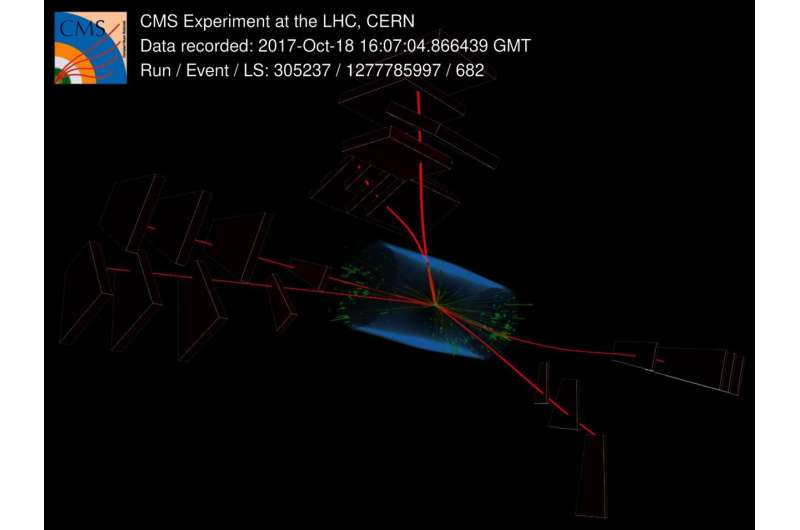CMS collaboration has observed three J/ψ particles emerging from a single collision between two protons

It's a triple treat. By sifting through data from particle collisions at the Large Hadron Collider (LHC), the CMS collaboration has seen not one, not two but three J/ψ particles emerging from a single collision between two protons. In addition to being a first for particle physics, the observation opens a new window into how quarks and gluons are distributed inside the proton.
The J/ψ particle is a special particle. It was the first particle containing a charm quark to be discovered, winning Burton Richter and Samuel Ting a Nobel prize in physics and helping to establish the quark model of composite particles called hadrons.
Experiments including ATLAS, CMS and LHCb at the LHC have previously seen one or two J/ψ particles coming out of a single particle collision, but never before have they seen the simultaneous production of three J/ψ particles—until the new CMS analysis.
The trick? Analyzing the vast amount of high-energy proton–proton collisions collected by the CMS detector during the second run of the LHC, and looking for the transformation of the J/ψ particles into pairs of muons, the heavier cousins of the electrons.
From this analysis, the CMS team identified five instances of single proton–proton collision events in which three J/ψ particles were produced simultaneously. The result has a statistical significance of more than five standard deviations—the threshold used to claim the observation of a particle or process in particle physics.
These three-J/ψ events are very rare. To get an idea, one-J/ψ events and two-J/ψ events are about 3.7 million and 1800 times more common, respectively. "But they are well worth investigating," says CMS physicist Stefanos Leontsinis, "A larger sample of three-J/ψ events, which the LHC should be able to collect in the future, should allow us to improve our understanding of the internal structure of protons at small scales."
More information: Detailed findings: cms-results.web.cern.ch/cms-re … PH-21-004/index.html
Provided by CERN


















